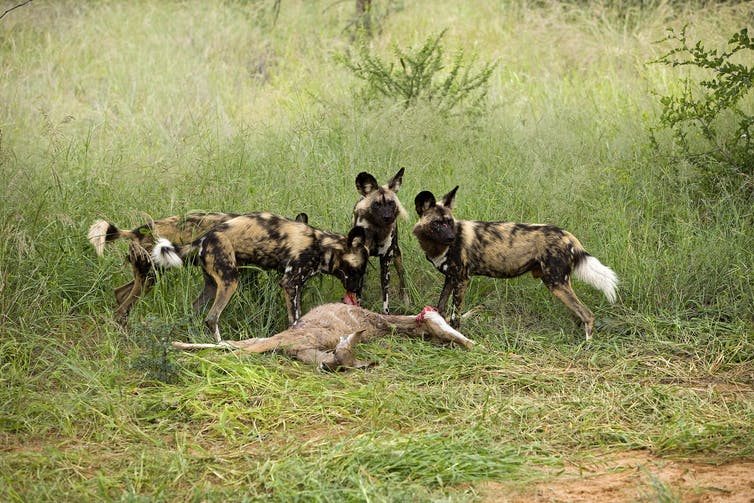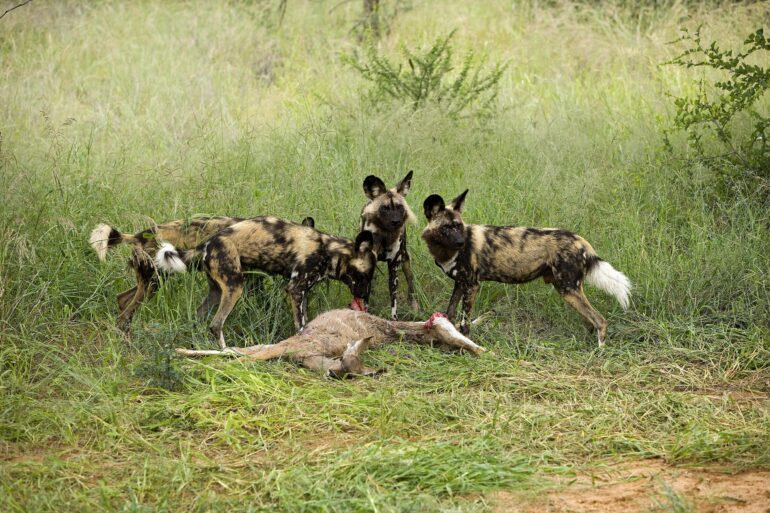Large carnivores in Africa are important from ecological, economic and cultural perspectives, but human activities put them at risk. Increasingly, lions, hyenas and African wild dogs are restricted to protected areas like national parks. Within these limited areas, they must compete for the same food sources.
Competition is, of course, nothing new. For several million years, African wild dogs have evolved within a set of large carnivores that all prey on the same large herbivore species, like wildebeest and warthogs. Wild dogs are lanky, long-distance hunters that always live in groups, usually of eight to 10 adults. Cooperation with pack mates allows them to hunt prey much larger than themselves. Weighing in at about 40-62 pounds (18-28 kilograms), wild dogs have been shaped by the necessity to compete with larger species like the lion and spotted hyena.
There may be a silver lining to being the bottom dog in the competitive hierarchy. Research that my colleagues with the Zambian Carnivore Programme and I have conducted in Zambia and Tanzania suggests why smaller, subordinate species like wild dogs are better able to move through human-modified landscapes. Understanding how is essential for their conservation.

A pack of African wild dogs makes a formidable hunting team.
slowmotiongli/iStock via Getty Images Plus
Meeting the African wild dog
In the late 1980s, I was studying dwarf mongooses in Tanzania’s Serengeti National Park when an extraordinary thing happened. While I sat on the roof of an ancient Land Rover watching mongooses on a nearby termite mound, a wild dog trotted past. And then another, and another. Wild dogs had been missing from most (perhaps all) of the Serengeti for years due to a combination of intense competition from larger carnivores and outbreaks of rabies. But here they were, back again.
Over the next year, I occasionally followed the dogs to watch them hunt on the shortgrass plains, where they were constantly shadowed by spotted hyenas. Several hyenas often trailed the dogs even as they set out to hunt, and hyenas quickly aggregated when the dogs killed a gazelle or wildebeest – often alerted by the unmistakable sound of vultures plummeting through the air in their own race to the fresh carcass.
Although they are half the size, wild dogs do not easily give up a kill to hyenas. A pack of wild dogs making a coordinated attack on one or two hyenas can easily drive them off. But hyenas are also social animals, and researchers found that the dogs generally lost their kills to hyenas when their numbers were equal. Given the large population of hyenas in Serengeti, they took nine out of 10 kills that the dogs made. And lions are simply too dangerous to fight, so the big cats could always take over a kill from the dogs, and kill them surprisingly often.
At that time, very little was known about wild dogs in places other than Serengeti and South Africa’s Kruger…
